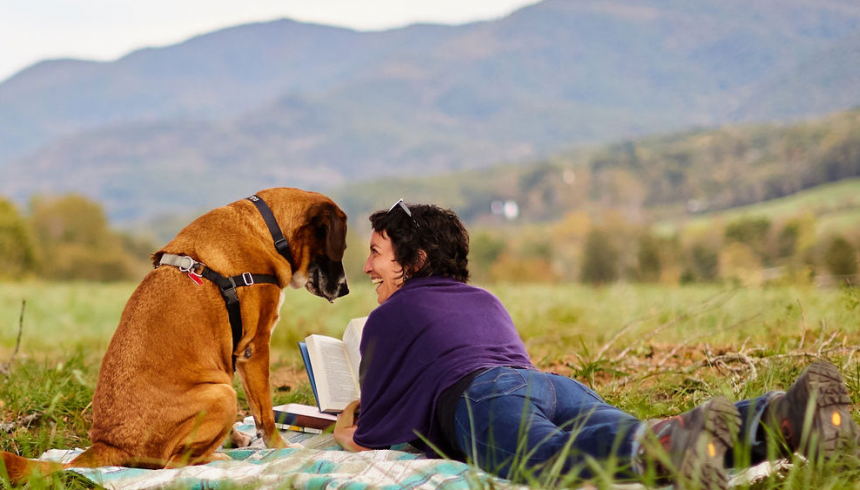The animal world is an epitome of contrast and complexity, so to say. Be it the diversity in terms of size or the differences in behaviour, it is nothing short of fascinating. As astonishing as this diversity of the animal world is, its relationship with the humans is even more intriguing. What better an example to cite than a Cow, an animal which has been for so many years now, a member of the households of millions of farmers. For some, it has been the only earning member of the family. No wonder they would call it ‘Dodh-Mouj’ and no surprises that farmers have over the years treated it like a member of their families.
Fast forward to the 21st century, times have changed and so has the preference for keeping some animals as pets over others but what remains the same is the relationship between humans and animals. What makes them alike is inquisitiveness. Humans are inquisitive and so are the animals. This inquisitiveness transforms into a relationship – either a bond or a conflict.
While on one side, a dog wags its tail, obeys the commands of its keeper and does its duty faithfully, on the other side, a bunch of dogs on the street gang up on a child or an elderly and create trouble. Same animal, different environments, different behaviour. Interesting and Intriguing. While the bonds are beautiful, the conflicts can get unimaginably ugly.
The bond-Unshakeable and Unbreakable
Talk about the different facets of human-animal bond, there is no better place than social media to watch them all unfold. Pets vary from something as tiny as a mouse (yes, you read that right) to something as weird (as it may sound) as a snake or as colorful as a parrot. Keeping pets is a ‘trend’ these days and to a large extent, a good one. Almost every other person, as it appears, has a pet these days and generations Z and alpha, which appear to have a term for almost everything, prefer to call these people as ‘Pet parents.’
The bond is not new though. It has been there for centuries and has evolved over the years, both in terms of the type of pets and the knowledge of the benefits of such bonds. Talk about benefits and there are plenty of them, well-researched and well-documented. If you are pet parent, you are more likely to have reduced anxiety and stress, a decreased risk of heart attacks, a healthy blood pressure and no feelings of loneliness. What more can one ask for. If your bond is strong enough, your pet might provide you a shoulder to cry on if you are going through tough times.
What is even more likeable about them is that they don’t ask for much in return. Just a few gentle pats and rubs, occasional treats, some frequent outings and they are good to go. Well, as it may appear, having pets is a win-win situation for humans or is it? This age of information (or should I say age of information and misinformation) has its own ways of troubling pet parents and it is where the conundrum sets in.
The pet parent conundrum – caught between emotions and science
With the emotions running high, the pets are usually found mostly idling peacefully in a parents lap more than in their well-designed and well-designated shelters. They are treated (if this is not an exaggeration) like babies and children. They deserve to be treated that way as they can literally take a bullet for their keepers. Pets get to sleep in their parents beds and get to share hugs and kisses with their parents.
Human-animal bond has always been strong and has grown even stronger by the day. However, emotions are sometimes accompanied by complacency wherein parents refuse to accept the fact that pets, if not taken care of properly, can become a source of infections and diseases. Unaware of the threat of the zoonoses that a pet may possess owing either to lack of knowledge or to the unbridled emotions that they share with their pets, these parents often fall prey to misinformation.
The conflicts – Disconcerting yet thought provoking
Stray animals, apparently the most harmless creatures, have the tendency to gang up on a child or an elderly. That’s where things turn ugly. Social media, most of the time, is buzz with disturbing videos of an elderly or a child being ruthlessly mauled by a pack of dogs. These strays spring from the open dump yards of waste created by humans. Not only do they use these spaces as a source of food but also utilize them as breeding grounds leading to rapid proliferation leading to what we call the ‘stray dog menace.’
If the threat from the strays was not worrying enough, a bigger threat has already announced its presence. The beasts of the jungle, you name them, Tiger, Bears and Wild Boars, roaming around into the villages and the cities. What would be a very rare sight in the past is a frequent occurrence these days. Human-animal conflict is not new but the shape that it has acquired is both new and disturbing. The conflicts would, in the past, usually occur when humans trespassed into the wild habitat.
Now the conflicts occur in human habitats. A big reason to worry or maybe an even bigger reason to introspect into the relationship of humans with nature. Global warming, habitat destruction, unplanned and under planned habitation in the wild habitats have played a huge role in the exaggeration of the conflicts. The barrier that kept these creatures of the wild away from humans seems to be thinning by the day.
Who will bell the cat? The role of people and the Government in containing conflicts
Pet parents need to make themselves aware about the changing disease dynamics and the importance of hygiene. While it is true that animals can be a source of zoonotic diseases to their keepers, it is important that parents not only educate themselves about the possibilities of contracting any such diseases but verify and reverify any information that is circulated on social media platforms concerning their pets. If they still find themselves caught in a fix, an expert opinion, which in these cases would be of a veterinarian, should be sought before panicking and jumping to conclusions. Additionally, government in collaboration with SKUAST should offer online training courses for pet parents which make them aware about the basics of pet parenting, pet hygiene and zoonoses.
With an increased incidence of the stray animals attacks, the onus lies more on the people than the government. The increase in the number of stray animal attacks can in part be attributed to a degrading civic sense among the common people. Even after the government’s drive for doorstep collection of wastes (initiatives like Swachh Bharat Abhiyan), many people still, being slaves of their habits, tend to dump the domestic wastes either on the side of the road or in the water bodies.
It is important that we as the responsible members of the society take a lead and lend a helping hand to the government to ensure that the efforts to curb this menace fructify. Government efforts should focus on intensifying animal birth control measures, creation of required infrastructure for carrying out necessary procedures, identification of high-problem areas and targeted operations in such areas and taking measures towards creation of stray-animal free zones around important establishments like hospitals and schools among many other measures in vogue.
As far as the conflicts between humans and wild animals are concerned, it is important that humans respect the territory of wild animals. Unnecessary trespassing and destruction of habitat need to be kept in check. Wherever, due to certain unavoidable circumstances, constructions are to be carried out, they should follow a proper protocol in terms of environment clearances and calculate the likely extent of environmental damage, damage to the inhabitants and remedial measures of any such damages should be adopted beforehand.
It is important that as responsible citizens of the society, our efforts should add up to the efforts of the government in addressing the issues of human-animal conflict. It is imperative that while adopting any measures to curb the conflict, due consideration should be given to animal ethics and animal welfare to ensure that goals are achieved without compromising on ethical and welfare aspects of animals in question. Even a small contribution will go a long way in addressing the issue and pave a way in ensuring a better life for all. It all starts with a small step!
(Author is a Veterinary Assistant Surgeon, Government of Jammu and Kashmir. Feedback: [email protected])








